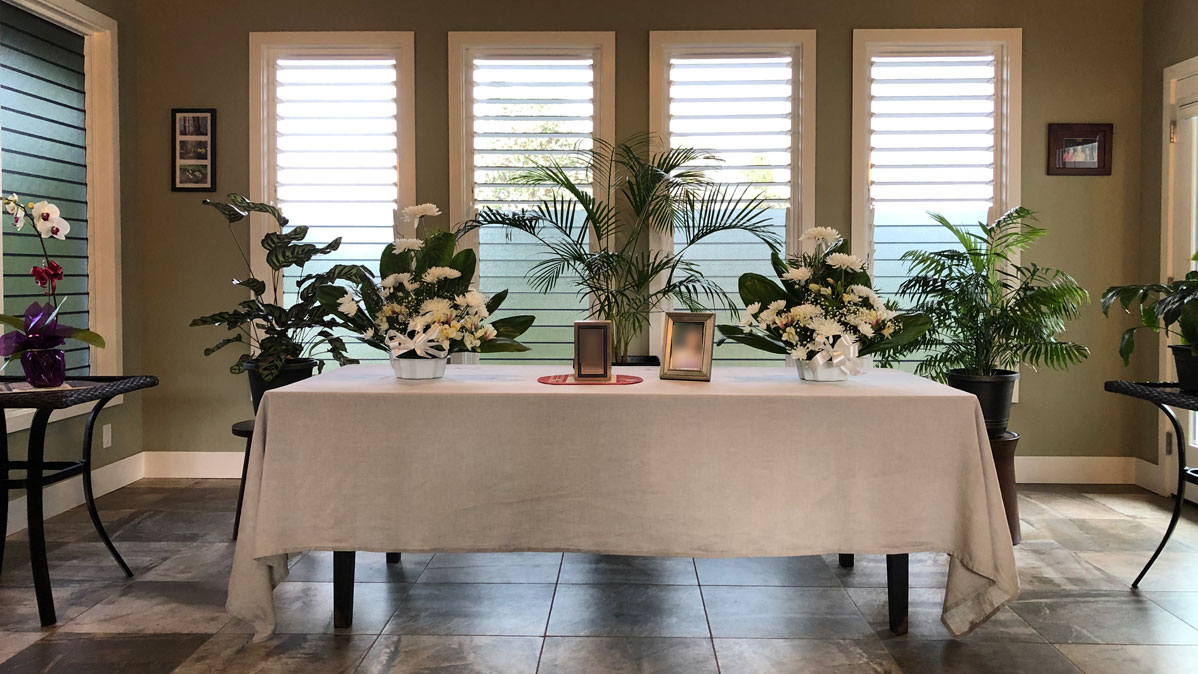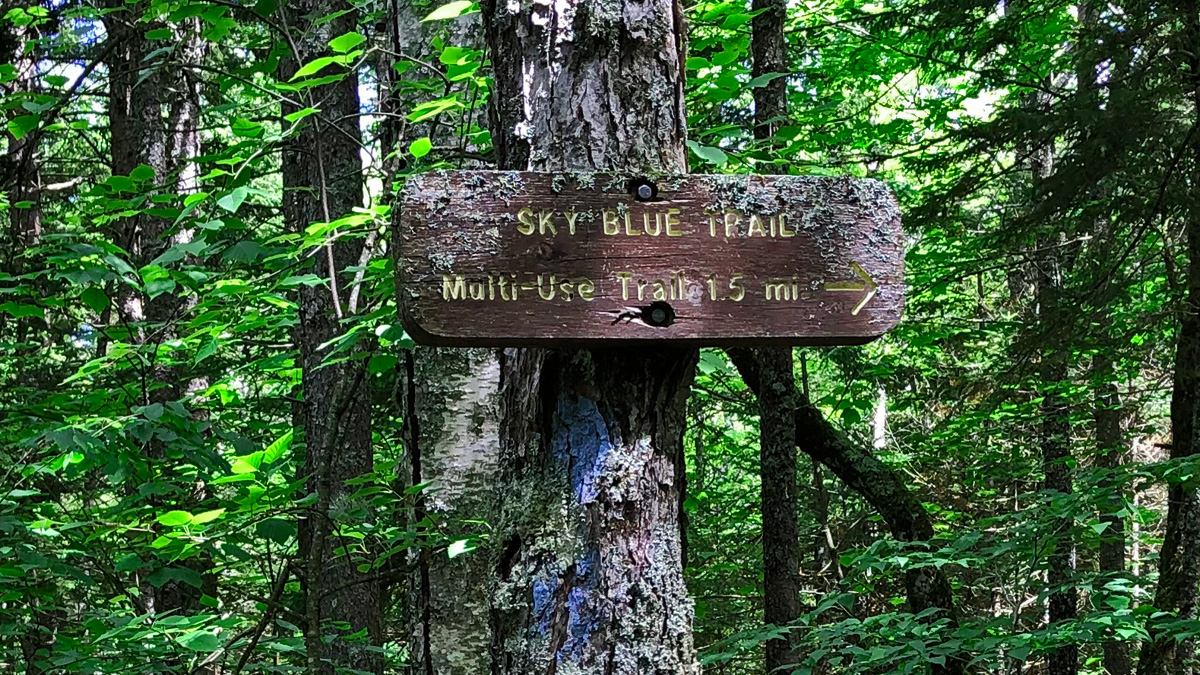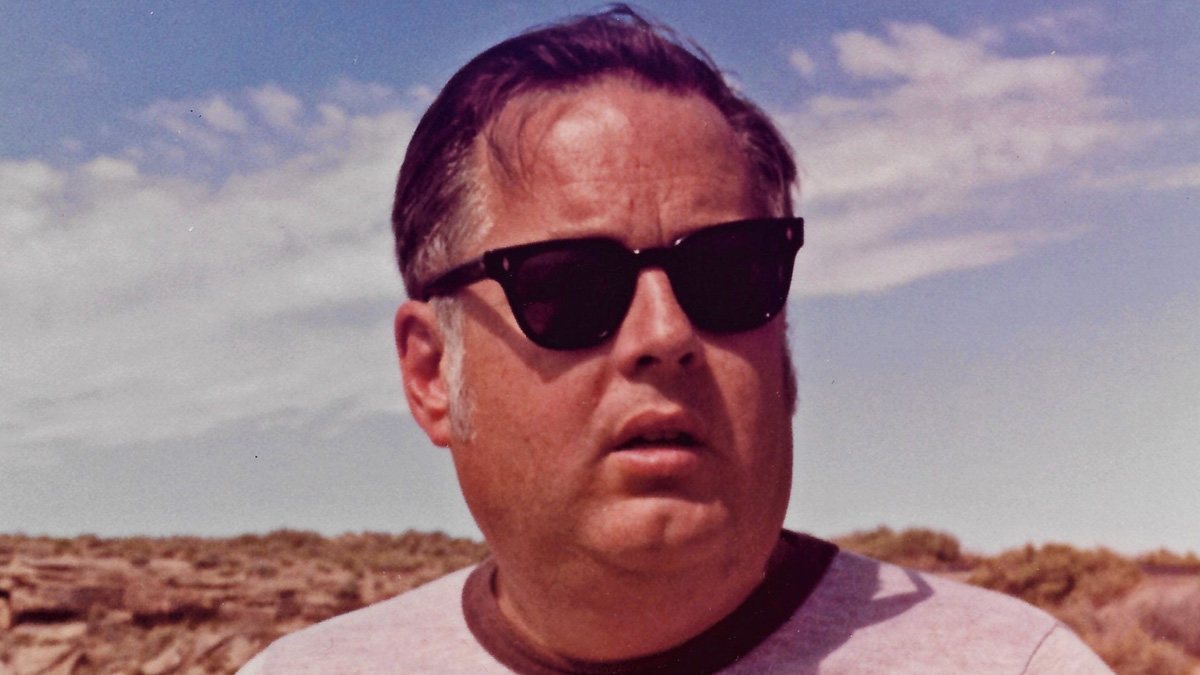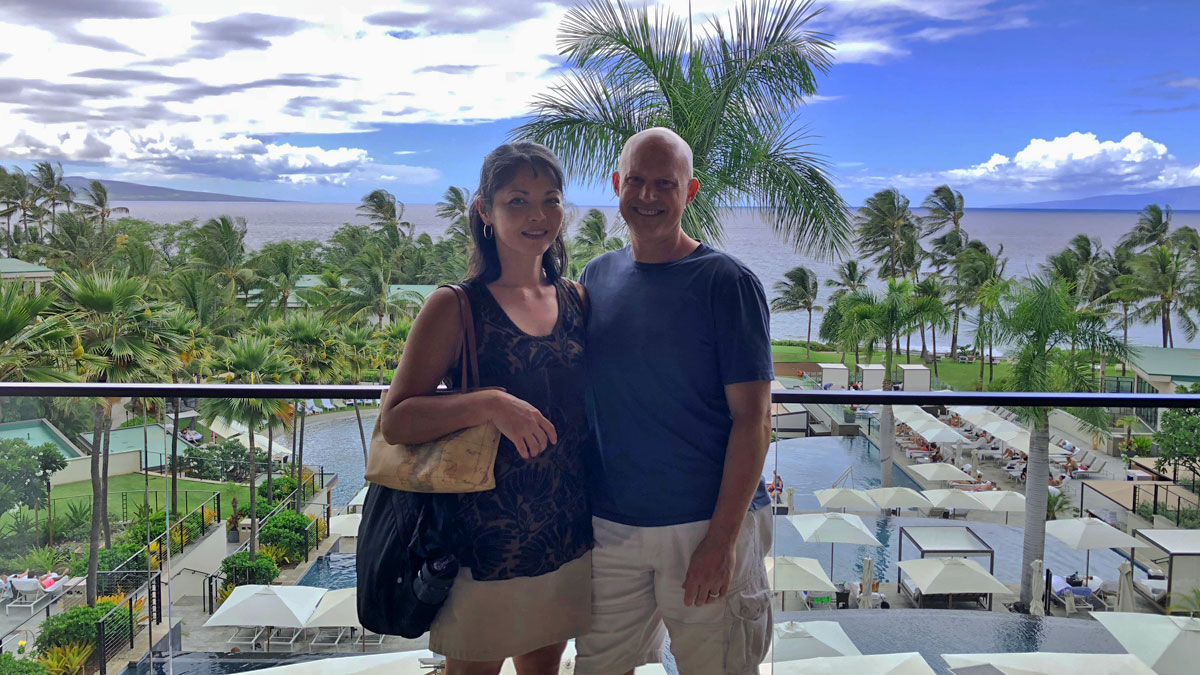
Five
A Time For Reflection
As the fifth anniversary of my wife's death looms, surely I must have learned something.
Two cancers, plus a brain disease—the whole story would take too long. So I'll (mostly) skip to the end.
[from Anybody Listening?, by Queensryche]
Feel the breeze?
Times so near you can almost taste the freedom
There's a warm wind from the south
Hoist the sail and we'll be gone
By morning this will all seem like a dream

In 2005, at age 39, my wife was diagnosed with breast cancer. It was a small, early-stage tumor, but further testing revealed that she was BRCA2 positive, which meant that, genetically, she had an increased risk for a variety of cancers. As a result, she had four surgeries that year (a mastectomy and a reconstruction on each breast), and then a hysterectomy in 2006. She had brain surgery in 2012 for an unrelated vascular disorder. Finally, in 2015, after being diagnosed with pancreatic cancer, she had a Whipple procedure, wherein they remove some of the pancreas, small intestine, stomach, and other miscellaneous parts.
[A note about the brain disease: the condition she had could have killed her. What it did was to cause a stroke (she experienced temporary memory loss—for two days, she couldn't remember the previous year of her life, including her daughter's college graduation). After the surgery, which corrected the affected side of her brain, it still could have happened again on the other side and killed her. It was another cloud over our heads, but that's not what got her in the end, so that's all I'll say about it.]
We learned after the first surgery that she had a terribly low tolerance for anesthesia; each surgery resulted in 24-48 hours of nausea and vomiting (I'll never forget the nurse in the neurosurgical ICU at Brigham & Women's Hospital looking across the bed at me and saying, "I've never seen anything like this."). The Whipple procedure required twelve days of recovery in UCLA Medical Center. Two months after the surgery, she began a 6-month course of chemotherapy.
It was an aggressive form of chemo—for an aggressive cancer—which ran in 2-week cycles: on Monday she'd spend the day at the chemo center receiving IV drugs. She'd come home with a portable pump, which provided a continuous feed of an additional drug. On Wednesday she'd return to have the pump removed, giving her 11 days to recover before the next cycle. For the first couple of treatments, she generally felt better by Friday of the first week; by the 8th or 9th, and until the 12th and final treatment, she wouldn't recover until Friday of the second week, giving her just two days before the cycle started again. It was a nightmare, but it ended, finally, in March 2016, and she stayed relatively healthy for about two and a half years.
Then things really got bad.
* * *
We designed and built our house, a project that began in 2014. Sometime after she laid out the initial floor plan, she added a sunroom to the front. That was her room, and by hers, I mean that was the room she expected her hospital bed to be put in. After the BRCA2 diagnosis, she knew she was destined for an untimely—and probably unpleasant—death, and she wanted to be able to see the sun and feel the breeze while it happened. More importantly, if she were to die, she desperately wanted to do it at home. I had always taken care of her, through the seven surgeries and the chemo, and I was good at it. I had emptied drains and bedpans, helped her through countless hours of nausea and vomiting, showers and hair-washing, and wound care. And I had been through all this once before: my mother died of ovarian cancer, at home in a hospital bed, surrounded by family. If my wife, who had given me an amazing 23 years, and who had already suffered so much, were to die, I would do whatever I could to keep her at home.
We moved into the house Thanksgiving week, 2017.
[from The End Of The Innocence, by Don Henley]
I need to remember this
So baby give me just one kiss
Let me take a long, last look
Before we say goodbye

* * *
CA19-9 is a test that checks the level of pancreatic cancer antigens in the blood. Throughout her 3-year ordeal, her tests had never come back higher than 20. On November 7, 2018, less than a year into our new home, she had a blood test. The result: 166. There had been other signs: increasing bouts of diarrhea and unexplained nausea, some loss of weight and stamina, and some random pains. But hope springs eternal, and we spent a month wishing it were, somehow, just an anomaly. Then she had to do the test again…
I think this is worth telling: she was supposed to have the blood drawn on December 7, a Friday. I told her I'd take the day off and go with her—completely unnecessary, since it was a simple blood test, and the results wouldn't come in until the next day. But it felt important, so I stayed home. Throughout the morning, she kept delaying the trip to the lab, until around 1:30 when I said, "We really gotta go." Then she confessed: she'd gone the day before, by herself, and she already had the results. She had protected me; given me an extra 8 hours of peaceful ignorance. But I knew the news couldn't be good, or she'd have shared earlier. So she told me: 384. It takes about a half-second to read that number, and another half to register how horrible it is. One second to go from hopeful to desolate. So that was Friday, the beginning of the end. On Sunday the real pain started.
Much of the ensuing terror and chaos needs to be skimmed over for the sake of readability. Multiple CT scans and MRIs; an agonizing trip to Oahu for a PET scan; an excruciating radiation treatment; numerous doctor's visits that frequently left us knowing less than we did beforehand. The PET scan, however, finally revealed the problem (and the source of the pain): metastatic bone disease, in her femur, spinal column, sacrum, and pelvis.
* * *
For nearly two months I helped her walk, eat, drink, medicate, bathe, and desperately try to sleep. I had to create a spreadsheet to manage her regimen of oxycodone, ondansetron, prochlorperazine, promethazine, lorazepam, olanzapine, and more. Then, multiple times per day, I had to decide whether to wake her for her next dose (and interrupt her elusive sleep) or wait until she woke (and risk letting the pain and nausea overwhelm her). The pain started December 9, and before the month was over we had made 3 midnight trips to the emergency room for IV fluids and meds; that is how quickly the disease progressed.
If she sat or lay still, the pain would come, so she would walk—shuffle, really—but by January she needed help walking any distance, and she could only walk for a few minutes before she was too exhausted to stand. We developed a pattern: walk a few circles around the room, sit for a couple of minutes, walk a couple more circles, then to the sofa to sleep. (Thankfully, we had a reclining sofa, because she could not lay in bed without pain.) Moreover, for the last 3 weeks at home, she rarely slept more than an hour at a time, usually much less, and so, of course, neither did I. For the last 2 weeks, she could neither sit nor stand on her own, nor could she shower by herself. (Imagine the terror the first time you realize you're not capable of rising from a chair.)
* * *
On January 4, I contacted our local hospice provider. There was a registration process, and I didn't want to wait until we were desperate to get it done. We began to receive weekly visits from a nurse.
The next 2 1/2 weeks were a blur of doctor's visits, disappearing appetite, desperately adjusting meds to rein in pain and nausea, and walking in circles. Even using her phone became too difficult; I had to borrow a friend's old baby monitor so I could do household chores while she slept. I watched my brilliant, sexy, headstrong, vulnerable wife, her wits dulled by medication (and, perhaps, what they refer to as 'disease progression'), slowly disappear within herself. There were no tears, anger, or self-pity. Near the end, there was little emotion at all. I spent much of her last week at home crying quietly beside her while we walked our circles around the room; she rarely noticed. I have never been so alone in the company of another person.
The night of January 22, she woke more than ten times (I know this because, for some reason, I made notes of our sleep schedule that night). We would be up between 15 and 40 minutes before I could get her settled again, then try to sleep myself… and soon she would wake. I hope never to be so tired again. One more day. Then, the morning of the 24th, while I made coffee in the kitchen, I finally faced the reality: I could no longer go on. When she woke I told her that I thought it was time to switch to Hospice care. She immediately agreed—I realized later that she had already reached the same conclusion, and she had been waiting for me. I contacted Hospice, called my father-in-law, and helped her pack a bag. Around 2:00 that afternoon, she moved out of her home, just 14 months after we moved in, and I drove her to the Hospice facility. By 5:00 she was essentially free from pain and nausea, and she stayed that way for the next 13 days. I was able to be with her, but also, finally, mercifully, to sleep.
I don't want to mislead you; those 13 days were incredibly difficult. I won't share the details, because they're too personal and (believe it or not) too horrible. There's no way I can put a positive spin on watching someone die slowly, except that it's better than watching them die slowly and in pain.
In October, for our 20th wedding anniversary, we had been snorkeling off Maui. Less than four months later, on February 3, 2019—a Sunday—she fell asleep for the last time. The next morning, the nurse came in to take vitals. Her pulse was so faint that it didn't register on the machine, so she had to do it manually. I asked what it was; she said, “One hundred seventy-six.” If you are shocked at a resting heart rate of 176, you are not alone; I remain unable to grasp it. The nurse suggested that she probably could not maintain that for too long. Though she remained unresponsive, she hung on all day Monday, and then Tuesday. She finally left me just before 1:00am Wednesday, while I slept on the sofa in her room. I didn't know she was gone until the nurse woke me.
[from Now And Forever, by Carole King]
I miss the tears
I miss the laughter
I miss the day we met
And all that followed after

I have few regrets. I was a good (usually) and faithful (always) husband. I loved her desperately for better, and I was always there for worse. That Sunday in December, when the pain started, she lay on the bed trying to find a position that was reasonably comfortable. I lay next to her, knowing that our time together was suddenly, alarmingly, limited, and I told her all the things that I would wish I had if I didn't (or if I waited until her mind was no longer clear). She demonstrated a bravery in the face of death that still astonishes (and eludes) me. If she was afraid, I never saw it. And while I'm sad I couldn't let her die at home, in hindsight my true regret is that we didn't move to Hospice sooner. I was capable of caring for her, but she needed the professional care, facilities, and specialized drugs that only they can offer.

As the fifth anniversary of my wife's death looms, surely I must have learned something.

I touched on this in Goodbye, Dad, but I wanted that one to be mostly about him, so I didn't talk about the rest of my trip, which was all about my wife. It's time.

After everything I've been through, I needed to make sure that The Old Man's death didn't become just an afterthought (and even then, it almost did).

I told the story of my wife's death once, but in a mostly big-picture sense. Now my compulsion to write has me scrutinizing the details—augmenting my fickle memory with texts, emails, and medical records.

After more than two years navigating the aftermath of my wife's death, I think I found the answer. The obvious next step, for me, was to tell her all about it. This may be hard to read, especially if you have suffered a significant loss of your own.